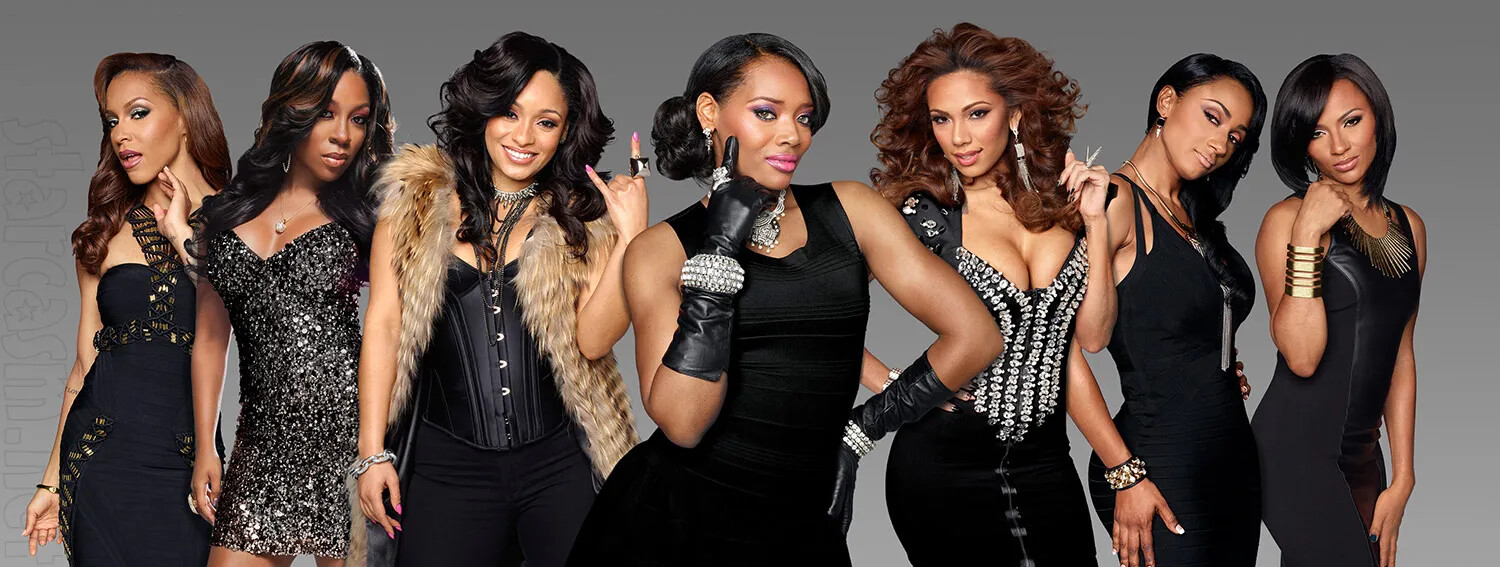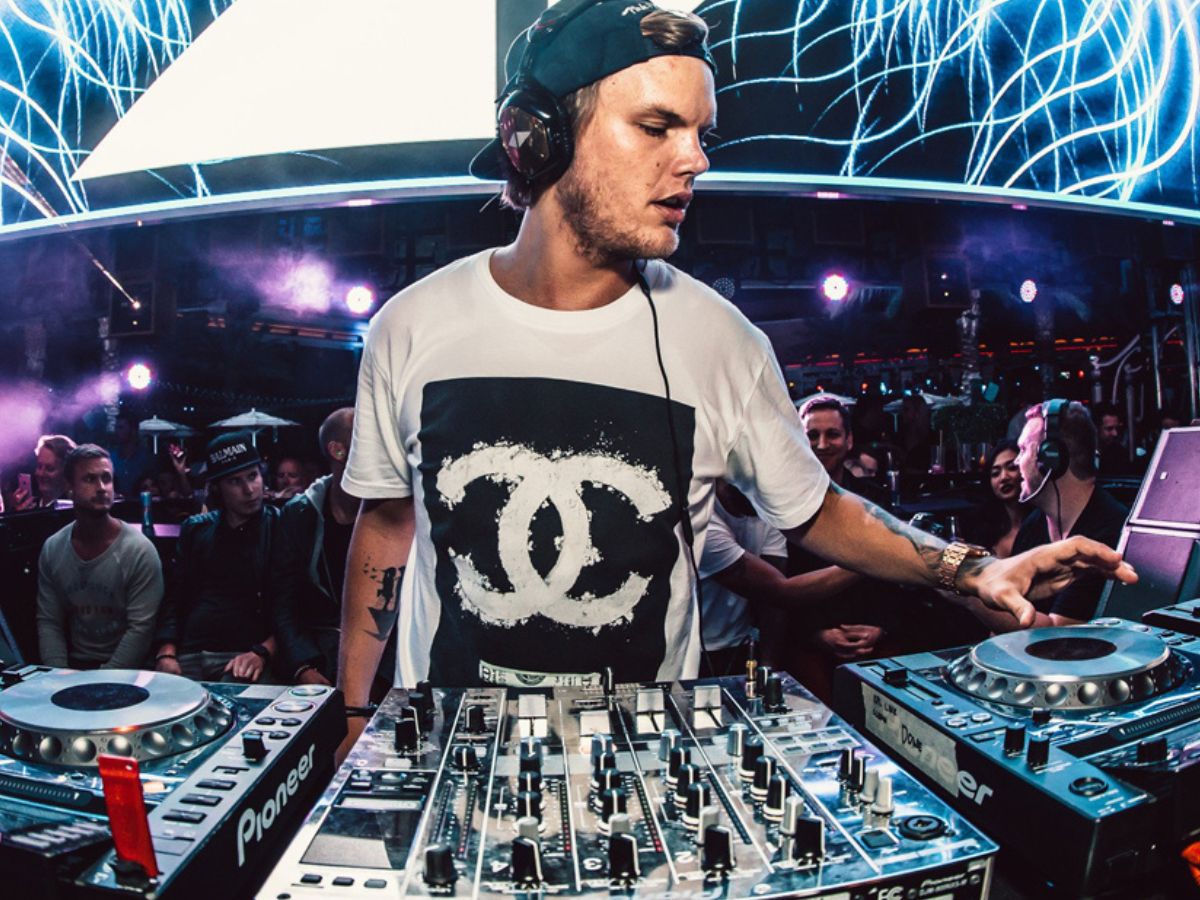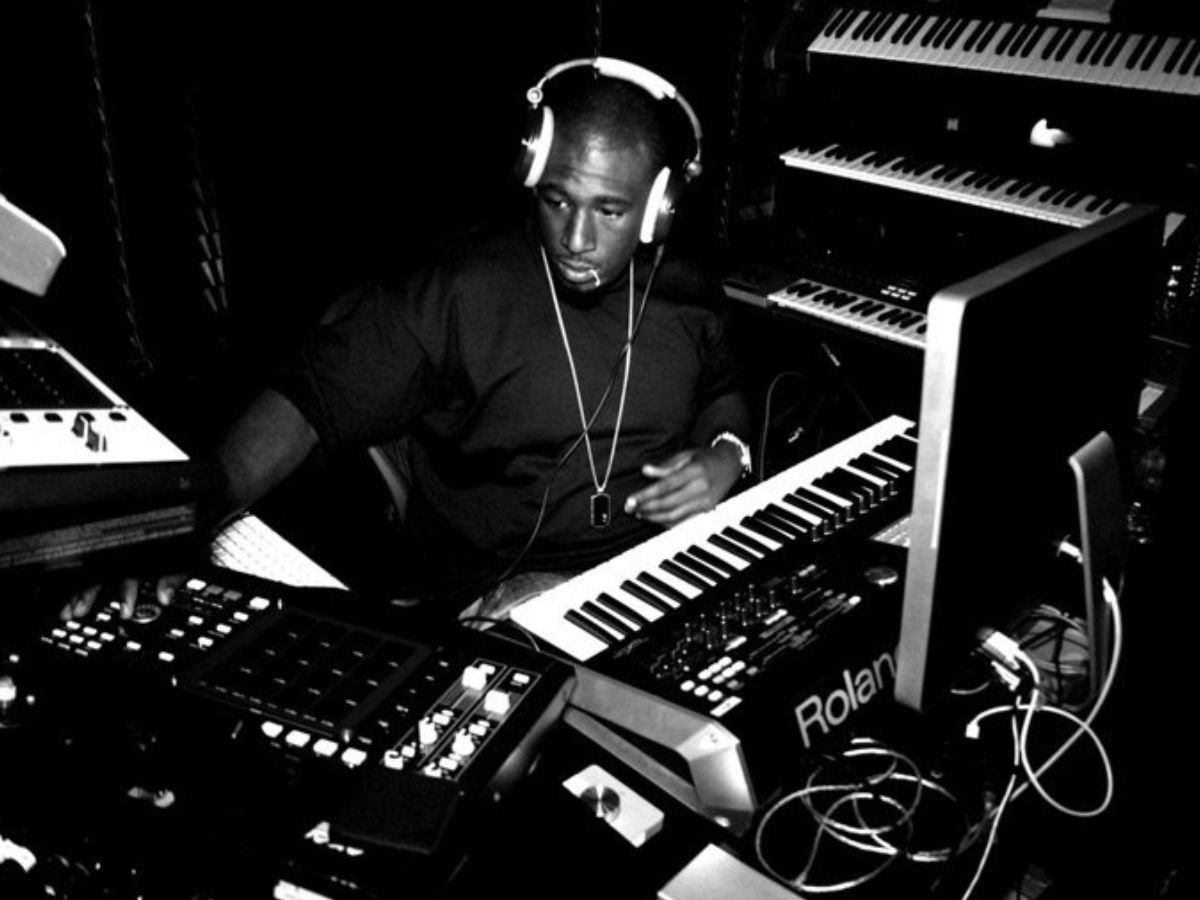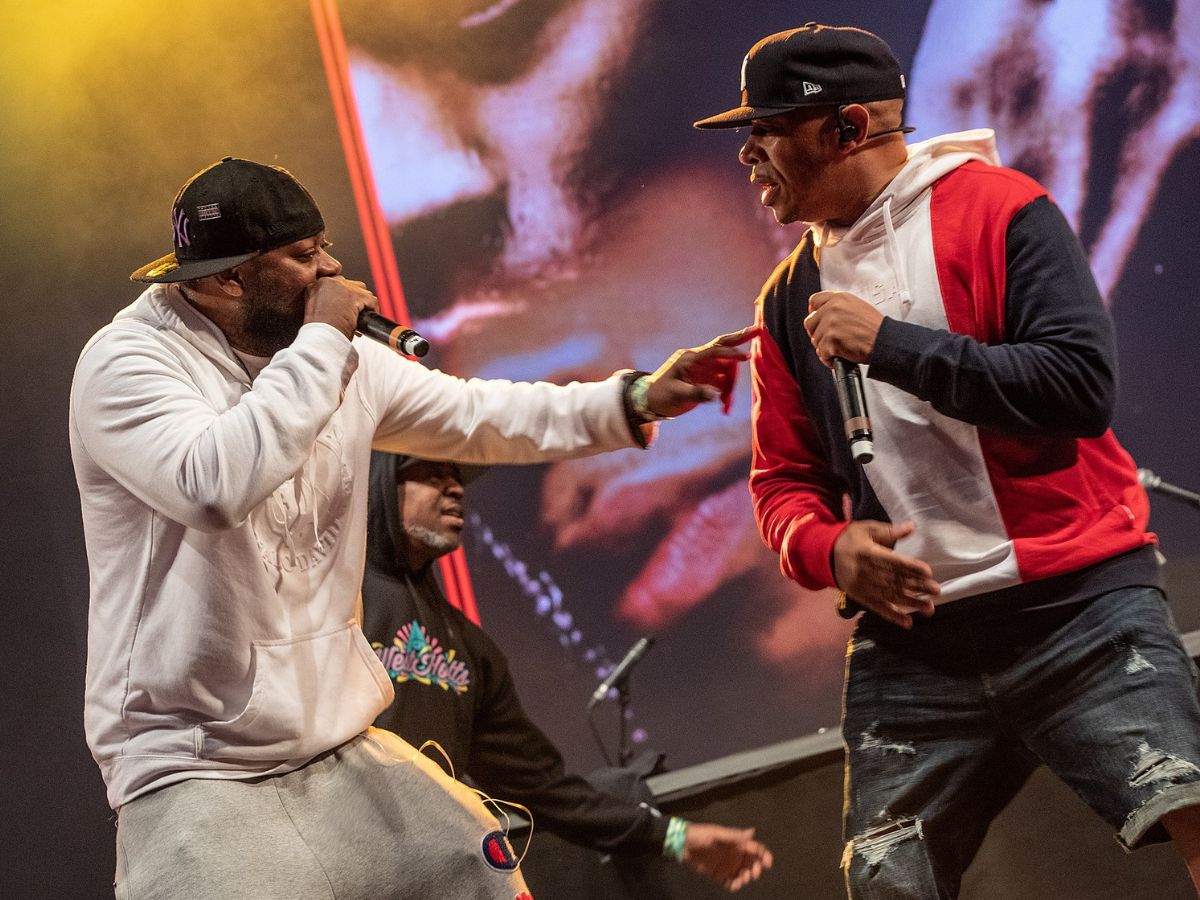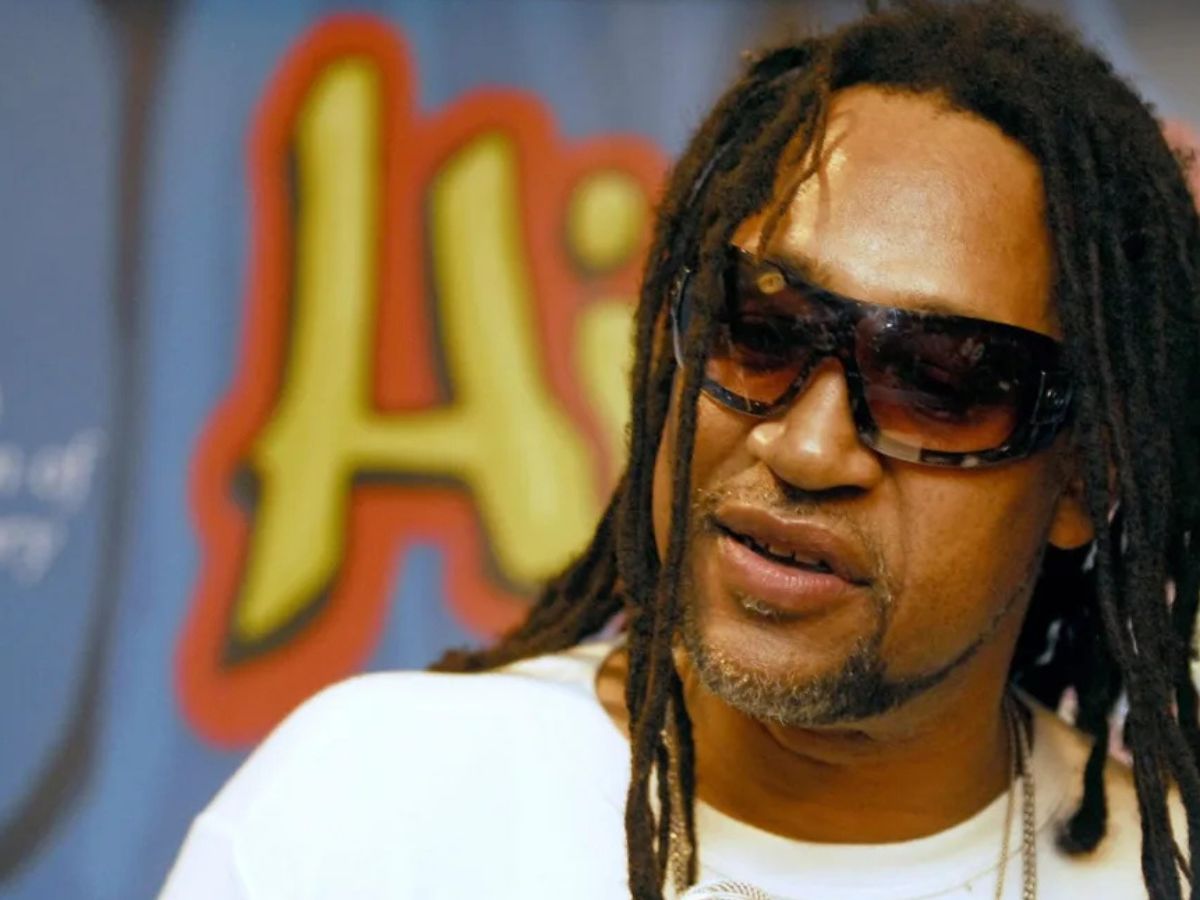

Hip Hop
How To Choreograph A Hip Hop Dance
Modified: March 5, 2024
Learn the art of choreographing hip hop dance routines with our step-by-step guide. Master the moves and create captivating performances in no time!
(Many of the links in this article redirect to a specific reviewed product. Your purchase of these products through affiliate links helps to generate commission for AudioLover.com, at no extra cost. Learn more)
Table of Contents
Introduction
Welcome to the world of Hip Hop dance, where rhythm, style, and self-expression collide in an explosive fusion of movement and music. Whether you’re a beginner or an experienced dancer looking to refine your skills, this comprehensive guide will walk you through the process of choreographing a Hip Hop dance routine.
Hip Hop dance emerged in the 1970s in the streets of New York City, born out of African-American and Latinx communities. It was a form of self-expression, a way to tell stories, and a means of reclaiming and celebrating cultural identity. Today, it has become a global phenomenon, influencing music, fashion, and popular culture.
Understanding the essence of Hip Hop dance is crucial to creating an authentic and captivating routine. It’s a dynamic style characterized by fluidity, isolations, and intricate footwork, combined with a strong sense of rhythm and musicality. Hip Hop encompasses various subgenres such as popping, locking, breaking, and krumping, each with its own distinct moves and techniques.
Now that you have a glimpse into the world of Hip Hop dance, let’s dive into the process of choreographing a routine. Whether you’re choreographing for yourself, a group, or a performance, the same fundamental principles apply. With a blend of creativity, musicality, and attention to detail, you’ll be able to create a dance routine that leaves a lasting impression.
Understanding Hip Hop Dance
Hip Hop dance is a dynamic and diverse art form that encompasses a wide range of styles and movements. To truly choreograph a compelling routine, it’s essential to have a solid understanding of the foundations and principles of Hip Hop dance.
One key element of Hip Hop dance is rhythm. The ability to feel and interpret the timing, beats, and accents of a song is crucial. This allows you to sync your movements with the music and create a seamless connection between your body and the rhythm. Pay close attention to the different layers of the music, such as the drums, bass, and melodies, as they provide opportunities for nuanced and impactful movements.
Another fundamental aspect of Hip Hop dance is musicality. It involves understanding and interpreting the emotion and energy within a song. By listening to the lyrics, instrumentation, and overall vibe of the music, you can bring out the essence of the song through your movements. Musicality allows you to tell a story, convey emotions, and engage with the audience on a deeper level.
Isolations are a hallmark of Hip Hop dance. They involve moving specific body parts independently while maintaining control and coordination. For example, you might isolate your chest, shoulders, or hips to create dynamic and visually captivating movements. Developing strong isolations will add texture and variety to your choreography.
Footwork is another essential component of Hip Hop dance. It refers to the intricate and rhythmic movements performed with the feet. Different styles of footwork, such as glides, slides, and shuffles, can be incorporated into your routine to enhance its complexity and visual appeal.
Lastly, storytelling and self-expression are at the heart of Hip Hop dance. It provides a platform to share personal narratives, cultural experiences, and social commentary. Infuse your choreography with authenticity and emotion to bring your vision to life. Use gestures, facial expressions, and body language to convey your message and connect with your audience.
By understanding these key elements of Hip Hop dance, you’ll be equipped to create choreography that captures the essence of the style and captivates your audience. Let’s move on to the next step: choosing the perfect music for your routine.
Choosing the Music
The right music can make or break a Hip Hop dance routine. It sets the tone, energy, and vibe for your choreography. When choosing the perfect music, there are several factors to consider.
Firstly, select a song that resonates with you and evokes the emotions and style you want to portray. Whether it’s a hard-hitting banger or a soulful track, the music should inspire and ignite your creativity. Listen to a variety of songs from different artists and genres to explore different flavors and find the one that speaks to you.
Consider the length of the song as well. Aim for a track that fits within the desired duration of your routine. Keep in mind that shorter routines (1-2 minutes) may require more intense and fast-paced music, while longer routines (3-4 minutes) can accommodate a mix of tempos and moods.
Pay attention to the beats and structure of the song. Look for musical breaks, drops, or transitions that can be accented with sharp movements or powerful choreography. These moments can create impactful visual moments that enhance the overall performance.
Collaborating with a DJ or music producer can add a unique touch to your routine. They can help remix or adapt the music to suit your choreography, making the performance more personalized and engaging. Don’t be afraid to experiment with different versions or remixes of the song to find the perfect match.
It’s also essential to consider your audience and the context of your performance. If you’re planning to perform in a competition, research the judging criteria and rules regarding the music. Some competitions have specific guidelines for music selection, so make sure to comply with those requirements.
Ultimately, the music you choose should align with your artistic vision and allow you to showcase your skills and style. It should energize you and ignite your passion for dancing. Once you’ve selected the perfect track, it’s time to move on to the next step: creating basic moves for your routine.
Creating Basic Moves
When choreographing a Hip Hop dance routine, it’s crucial to start with a foundation of basic moves. These moves will serve as your building blocks, allowing you to create a cohesive and dynamic choreography. Here are some steps to help you develop your basic moves.
Begin by familiarizing yourself with the fundamental moves of Hip Hop dance, such as the two-step, body rolls, pops, locks, and freezes. These moves form the backbone of many Hip Hop routines and provide a starting point for your choreography. Practice these moves until they become second nature, allowing you to focus on adding your own personal flair and style.
Experiment with variations and combinations of basic moves to create new sequences. For example, you can combine a body roll with a pop and a lock to create a unique movement sequence. Feel free to incorporate your own interpretations and adaptations of the moves to make them your own.
Consider the dynamics and flow of your routine. Mix slower, more controlled movements with quick, sharp hits to create contrast and keep your audience engaged. Adding levels to your moves, such as going from standing to the floor or using different planes, can also add visual interest and variety to your choreography.
Take inspiration from other dancers and choreographers but strive to develop your own style. Blend different elements and influences to create a unique movement vocabulary that reflects your personality and artistic vision. Remember, originality and authenticity are key.
As you create your basic moves, keep in mind the musicality of the song you’ve chosen. Emphasize certain beats or accents with your movements to enhance the synchronization between the music and your choreography. This will create a seamless connection and heighten the impact of your routine.
Don’t be afraid to explore different styles and techniques beyond traditional Hip Hop dance. Incorporate elements from other dance genres like jazz, contemporary, or even street dance styles to add depth and dimension to your routine. Make it your own and embrace the boundaries of creativity.
Once you’ve established your basic moves, it’s time to move on to the next step: developing transitions that seamlessly connect your sequences and elevate your choreography.
Developing Transitions
Transitions are the bridges that seamlessly connect different moves and sequences in your Hip Hop dance routine. They play a crucial role in maintaining the flow, energy, and cohesiveness of your choreography. Here are some tips to help you develop smooth and impactful transitions.
Understand the music: Transitions should be in sync with the music, enhancing the rhythm and dynamics of the song. Take note of musical cues, such as breaks, drops, or changes in tempo, and use them as opportunities to transition between moves. This synchronization will create a seamless connection between your choreography and the music.
Explore different pathways: Instead of relying on straightforward movements from one move to another, add depth and dimension to your transitions by exploring different pathways. This can include circular movements, diagonal lines, or even moving in different planes – high, low, and mid-level. Experimenting with non-linear transitions adds visual interest and complexity to your routine.
Use body isolations: Incorporating body isolations in transitions can create a smooth and effortless flow. Isolate specific body parts, such as the chest, head, or hips, and use them to lead into the next move. For example, a subtle chest pop can seamlessly transition into a body roll, creating a fluid and visually captivating connection between the two moves.
Employ directional changes: Transitioning from facing one direction to another can add a dynamic element to your choreography. Use spins, turns, or pivots to change your orientation and lead into the next move. This change of direction adds variety and keeps the audience engaged.
Explore levels: Incorporating changes in levels can add depth and complexity to your transitions. Transitioning from standing to the floor or vice versa can create dramatic moments in your routine. Don’t be afraid to experiment with different ways of getting up or down, such as slides, drops, or controlled falls, to create visually striking transitions.
Smooth out transitions with fluid movements: Pay attention to the quality of your movements during transitions. Aim for fluidity and avoid any jerky or abrupt motions. Use controlled and continuous movements to create a seamless flow between different moves and sequences. Smooth transitions will elevate the overall aesthetic of your routine.
Practice and refine: Transitioning seamlessly takes practice. Spend time rehearsing your transitions to ensure they are clean and well-executed. Film yourself or seek feedback from other dancers to identify areas for improvement. Refine your transitions until they become effortless and natural.
Remember that transitions are not just about getting from one move to another; they are an integral part of the choreography. Thoughtfully developing and executing transitions will elevate your routine and create a polished and professional performance.
Once you have mastered the art of transitions, it’s time to add an element of spontaneity and creativity with freestyle elements. Let’s move on to the next step.
Incorporating Freestyle Elements
Freestyle is a vital component of Hip Hop dance that allows for personal expression and improvisation. It adds a sense of spontaneity and individuality to your choreography. Incorporating freestyle elements into your routine not only showcases your skills but also adds an exciting dynamic to your performance. Here are some tips to help you effectively incorporate freestyle elements into your routine:
Find the pockets: Listen closely to the music and identify specific moments within the song that inspire you to freestyle. It could be a musical break, a change in tempo, or a particular lyric. These pockets provide the perfect opportunity to let loose and showcase your individual style and creativity. Let the music guide your movements and embrace the freedom of freestyle.
Experiment with different styles: Use freestyle as an opportunity to explore different dance styles and techniques. Incorporate elements from other genres, such as popping, locking, or breaking, to add depth and diversity to your routine. This versatility will captivate the audience and highlight your versatility as a dancer.
Play with dynamics: Freestyle allows you to play with different dynamics within your routine. Experiment with variations in speed, intensity, and energy. Transition smoothly between fast and slow movements, sharp hits, and fluid motions. This contrast adds intrigue and keeps the audience engaged throughout your performance.
Engage with the audience: Freestyle is not just about showcasing your skills; it’s also about establishing a connection with your audience. Make eye contact, interact with the crowd, and let your personality shine through your movement. Engaging with the audience creates a memorable experience and enhances the impact of your performance.
Embrace mistakes: In freestyle, it’s natural to make mistakes or encounter unexpected challenges. Embrace these moments and use them as opportunities for creativity. Turning a mistake into a unique movement or using it as a springboard for a new sequence can add authenticity and excitement to your routine.
Practice and adapt: Freestyle requires practice to build confidence and improve your improvisation skills. Set aside specific practice sessions solely dedicated to freestyle. Explore different movements, experiment with musicality, and push your boundaries. As you become more comfortable with freestyle, adapt and refine your routine to incorporate new ideas and movements that emerge during your improvisation sessions.
Remember, freestyle is a representation of your personal style and creativity. It’s a chance to showcase your individuality and take ownership of your choreography. Utilize freestyle elements strategically throughout your routine to keep your performance fresh and engaging.
Now that you’ve added freestyle elements to your routine, let’s explore the concept of formation changes to enhance the visual impact of your choreography.
Adding Formation Changes
Formation changes play a crucial role in creating visual interest and enhancing the overall impact of your Hip Hop dance routine. By strategically moving and rearranging dancers on stage, you can create dynamic and visually captivating moments. Here are some tips on how to effectively incorporate formation changes into your choreography:
Plan ahead: Before diving into the choreography, have a clear vision of the formations you want to create throughout the routine. Sketch out a diagram of the stage or mark specific spots on the floor to represent each dancer’s position. This will help you visualize the transitions and ensure they flow smoothly.
Utilize different formations: Experiment with a variety of formations to add variety and depth to your routine. These can include straight lines, circles, diagonals, or geometric shapes. Transitioning from one formation to another, such as moving from a circle to a straight line, can create visual impact and surprise the audience.
Sync formations with the music: Take advantage of musical cues, beats, or lyrics to synchronize your formation changes with the music. Aligning the movements with the music enhances the visual impact. Coordinate group transitions with specific musical accents or use pauses in the music to create dramatic moments during formation changes.
Create seamless transitions: Smooth transitions between formations are essential for maintaining the flow and cohesiveness of your routine. Practice the movements and timing of the formation changes to ensure they are executed seamlessly. Consider incorporating transitional movements, such as synchronized walks, slides, or pivots, to add fluidity to the transitions.
Consider levels and spacing: Incorporate variations in levels and spacing within the formations to add depth and visual interest. Experiment with dancers standing, sitting, or kneeling at different heights. Play with the distance between dancers to create patterns or highlight specific movements during the routine.
Use visual focal points: Designate visual focal points within your formations to draw the audience’s attention. This could be a solo dancer in the center, a group at a specific corner, or a formation change that culminates in a specific area of the stage. These focal points create moments of emphasis and enhance the dramatic impact of the routine.
Rehearse formation changes: Practice and refine your formation changes during rehearsals to ensure the precision and coordination of the movements. Film or record the routine to analyze the visual impact of the transitions and make any necessary adjustments. Aim for clean and synchronized movements to create a polished and professional performance.
Remember, formation changes are not just about moving from one spot to another; they contribute to the overall storytelling and visual appeal of your routine. Thoughtfully incorporating formation changes will elevate your choreography and create memorable moments on stage.
Now that you have added formation changes, it’s time to focus on styling and grooving to enhance the individuality and attitude in your performance.
Styling and Grooving
To truly elevate your Hip Hop dance routine, it’s essential to incorporate styling and grooving. These elements add individuality, attitude, and flavor to your performance. They allow you to showcase your personal style and make a lasting impact on your audience. Here’s how you can effectively incorporate styling and grooving into your choreography:
Embrace the music: Styling and grooving are heavily influenced by the music you’re dancing to. Pay close attention to the nuances and elements of the song, such as the rhythm, beats, melodies, and lyrics. Let the music guide your movements and inspire your styling choices. Feel the music in your body and allow it to dictate the way you groove and express yourself.
Develop your own style: Hip Hop dance is all about individuality and self-expression. Take the time to develop your unique style by blending various elements, influences, and movements. Incorporate moves that feel natural to you and allow your personality to shine through your performance. Embrace your strengths and quirks, and don’t be afraid to push the boundaries of creativity.
Pay attention to details: Styling is all about the small details that add flair and character to your movements. Focus on gestures, facial expressions, hand placements, and body language to bring your performance to life. Adding subtle accents and nuances to your grooves can create a visually captivating experience for your audience.
Experiment with textures and dynamics: Each song has its own vibe and energy. Explore different textures and dynamics in your movements to match the mood of the music. Explore smooth, fluid movements for softer sections and sharp, angular movements for more intense moments. Playing with contrasting textures and dynamics adds depth and variety to your choreography.
Practice grooving: Grooving is all about feeling the music and allowing your body to naturally respond to it. Practice grooving by freestyling to different songs and genres. Develop your ability to catch the beat and groove with a relaxed and confident energy. Let go of any inhibitions and let your body guide you in finding your own unique groove.
Learn from other dancers: Study and watch other dancers who excel in styling and grooving. Analyze their movements, their use of space, and their unique style. Take inspiration from their creativity and incorporate elements that resonate with you into your own choreography. However, always strive to maintain your authenticity and bring your own personal touch.
Record and review: It’s crucial to record yourself during rehearsals to analyze and refine your styling and grooving. Watch the recordings with a critical eye, taking note of areas that need improvement or moments that can be further enhanced. Use these recordings to fine-tune your performance and make adjustments as needed.
Remember, styling and grooving are subjective elements that allow you to infuse your own personality and attitude into your Hip Hop dance routine. Embrace your uniqueness, let the music guide you, and showcase your individual flair.
With styling and grooving on point, it’s time to bring all the elements together and polish your routine for an unforgettable performance.
Bringing it all Together
You’ve now gone through the essential steps of choreographing a Hip Hop dance routine, from understanding the fundamentals to incorporating freestyle elements, formation changes, styling, and grooving. It’s time to bring all these elements together and polish your routine for a captivating and unforgettable performance.
Review your choreography: Take some time to review your choreography as a whole. Watch videos or rehearse with your group if you’re choreographing for a team. Look for any areas that need improvement or adjustments. Pay attention to the overall flow, transitions, and the coherence of the routine. Make tweaks to ensure the movements and sequences seamlessly connect and tell a cohesive story.
Refine musicality: Musicality is a crucial aspect of Hip Hop dance. Fine-tune your movements to synchronize with the music even more precisely. Emphasize specific beats or accents through impactful choreographic choices, making the connection between your movements and the music even stronger. Practice perfect timing and execute movements with precision for a polished performance.
Clean up formations: Pay close attention to the formation changes you’ve incorporated. Ensure that each transition is executed smoothly and seamlessly. Align the dancers precisely, maintaining proper spacing and positioning. Polishing the formations will enhance the visual impact and professionalism of your routine.
Inject your personal style: Remember to infuse your unique style and personality into the routine. Showcase your strengths and individuality through your movement choices, grooves, and styling. Let your passion and authenticity shine, so that your performance stands out and leaves a lasting impression on your audience.
Rehearse, rehearse, rehearse: Practice is key to a flawless performance. Schedule regular rehearsals with your group or set aside focused practice sessions if you’re choreographing solo. Utilize the recordings from your rehearsals to identify areas that need improvement. Seek feedback from trusted dancers or instructors to obtain valuable insights and make necessary adjustments.
Polish your performance quality: Apart from the choreography itself, consider other performance factors. Work on your stage presence, confidence, and connection with the audience. Use eye contact, facial expressions, and body language to engage and captivate the viewers. Pay attention to energy levels, ensuring a consistent and impactful performance from start to finish.
Make it your own: Lastly, don’t be afraid to take risks and make the routine your own. Add personal touches, creative variations, or unexpected surprises that highlight your uniqueness as a dancer. Confidence in your own abilities and artistry will elevate the overall quality and memorability of your performance.
Remember, the process of creating a remarkable Hip Hop dance routine requires dedication, creativity, and attention to detail. By bringing all the elements together – understanding the fundamentals, incorporating freestyle elements, formation changes, styling, and grooving – you’ll create a routine that not only showcases your skills but also tells a compelling story and leaves a lasting impact on your audience. Now it’s time to step onto the stage and show the world your incredible talent!
Conclusion
Congratulations on completing your journey of choreographing a Hip Hop dance routine! You have learned and applied the essential elements of Hip Hop dance, from understanding the foundations and choosing the right music to creating basic moves, incorporating freestyle elements, adding formation changes, and infusing your personal style.
Hip Hop dance is more than just movement; it’s a powerful form of self-expression, storytelling, and cultural celebration. By immersing yourself in the rhythm, musicality, and attitude of Hip Hop, you have created a routine that is unique to you, capturing the essence of this vibrant dance genre.
Throughout the process, you have discovered the importance of musicality, precise choreography, seamless transitions, and engaging with the audience. You have learned to embrace the spontaneity of freestyle, explore different formations, and infuse your moves with personal flair and creativity.
Remember, practice is key to mastery. Continually rehearse and refine your routine, paying attention to the details and polishing your performance quality. Embrace your individuality, trust in your skills, and let your passion shine through in every movement.
Whether you’re preparing for a competition, showcase, or simply dancing for the joy of it, the journey of choreographing a Hip Hop dance routine is a rewarding one. It allows you to express yourself, connect with others, and share your love for dance.
Now it’s time to take the stage and share your incredible choreography with the world. Dazzle the audience, leave them in awe, and inspire others to unleash their own creativity and passion for Hip Hop dance. Remember, the power of Hip Hop lies in its ability to bring people together, uplift spirits, and ignite change.
So go out there, perform with confidence, and continue to evolve and grow as a Hip Hop dancer. The journey of learning and creating never ends. Embrace the rhythm, stay true to your unique style, and keep pushing the boundaries of your artistry. Hip Hop dance is a powerful force, and you have the power to make a lasting impact through your craft.

